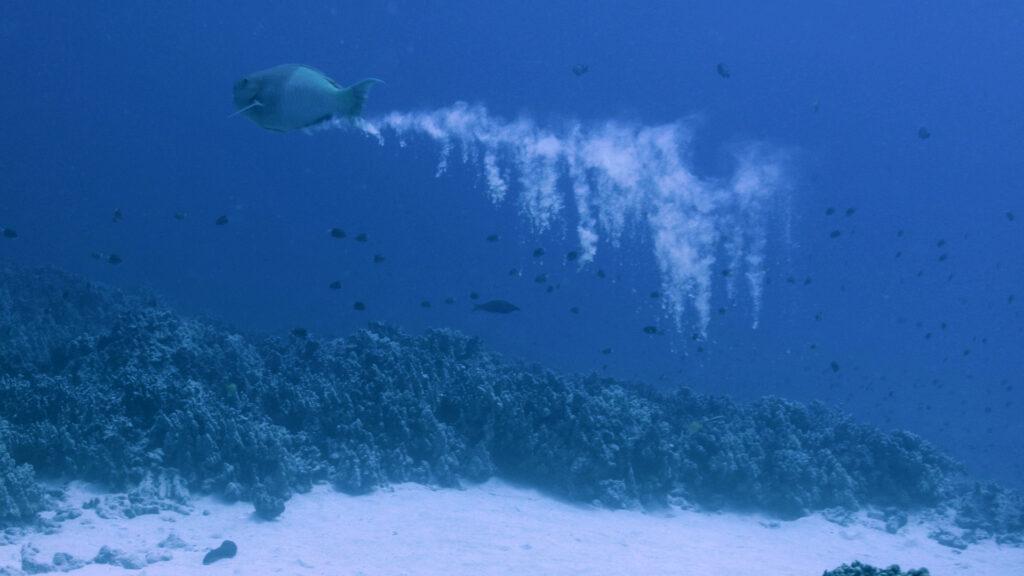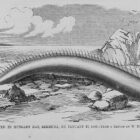Why do parrotfish poop sand?

Parrotfish, a colorful and diverse group of tropical fish found in coral reef ecosystems, possess a fascinating and peculiar habit of pooping large quantities of sand. This behavior has intrigued scientists and environmental enthusiasts, leading to extensive research aimed at understanding the reasons behind the unique sand production process in parrotfish.
The Digestive Process of Parrotfish
1. Feeding Habits and Coral Consumption
A significant aspect of the diet of parrotfish involves grazing on algae and coral. Studies by Bellwood (2003) and Burkepile & Hay (2008) reveal that parrotfish have specialized beak-like teeth designed to scrape algae off rocks and coral. During this feeding process, they inadvertently ingest small amounts of coral as they gnaw on the hard substrate to access the algae.
2. Parrotfish Digestion and Pooping Sand
The consumed coral material goes through the parrotfish’s digestive system, where the organic components are broken down and absorbed as nutrients. However, the inorganic calcium carbonate, which makes up the bulk of coral structures, is indigestible. To expel these indigestible particles, parrotfish excrete them in the form of fine sand particles, known as “parrotfish poop”. Research by Perry et al. (2012) and Bellwood & Choat (2011) explains that this excretion process is a means of eliminating the waste material generated from their feeding habits.
Ecological Significance of Parrotfish Sand Pooping
1. Coral Reef Formation and Sand Generation
The excretion of sand by parrotfish plays a crucial role in the formation and maintenance of coral reefs and sandy beaches. The constant grazing on coral and subsequent excretion of sand particles contributes significantly to the breakdown of coral structures. Over time, this process aids in the erosion of the hard coral skeleton, which, along with other natural forces, leads to the formation of fine coral sand. The sand produced by parrotfish contributes to the composition of sandy beaches and helps in the sedimentation process, benefiting the overall ecology of coral reef environments.
2. Influence on Ecosystem Health
The grazing behavior of parrotfish helps control algal growth on coral reefs. Studies by Burkepile & Hay (2008) and Bellwood (2011) emphasize that by consuming algae, parrotfish prevent overgrowth, preserving the health and diversity of coral reef ecosystems. The sand produced during their digestive process aids in nutrient cycling and sediment production, contributing to the overall balance of these delicate environments.
Environmental and Conservation Implications
1. Conservation Concerns and Reef Health
The declining populations of parrotfish due to overfishing and habitat destruction pose potential threats to coral reef health. Studies by Mumby et al. (2006) and Alvarez-Filip et al. (2009) highlight the significant role of parrotfish in maintaining the ecological balance of coral reef systems. Reduced parrotfish populations could potentially lead to altered coral reef dynamics, affecting sand production, sedimentation, and overall reef health.
2. Importance in Reef Management and Restoration
Understanding the crucial role of parrotfish in coral reef ecosystems is essential for effective reef management and conservation. Efforts to protect and restore parrotfish populations are critical in maintaining the delicate balance of coral reef environments. Conservation strategies focused on regulating fishing practices, establishing marine protected areas, and promoting sustainable management of coral reef habitats are essential for the preservation of parrotfish populations and the ecosystems they inhabit.
The unique digestive process of parrotfish, leading to the production of sand, plays a vital role in the ecology and formation of coral reefs. This behavior is essential in maintaining the health and balance of coral reef ecosystems and the formation of sandy beaches. The protection and conservation of parrotfish populations are crucial for preserving these delicate and vital marine environments.
References:
- Alvarez-Filip, L., et al. (2009). Rapidly shifting environmental baselines among fishers of the Gulf of California. Proceedings of the National Academy of Sciences, 106(52), 2259-2262.
- Bellwood, D. R. (2003). Origins and escalation of herbivory in fishes: a functional perspective. Paleobiology, 29(1), 71-83.
- Bellwood, D. R., & Choat, J. H. (2011). Dangerous demographics: the lack of juvenile parrotfishes on the Great Barrier Reef. Coral Reefs, 30(2), 549-554.
- Burkepile, D. E., & Hay, M. E. (2008). Herbivore species richness and feeding complementarity affect community structure and function on a coral reef. Proceedings of the National Academy of Sciences, 105(42), 16201-16206.
- Mumby, P. J., et al. (2006). Fishing, trophic cascades, and the process of grazing on coral reefs. Science, 311(5757), 98-101.
- Perry, C. T., et al. (2012). Fish as major carbonate mud producers and missing components of the tropical carbonate factory. Proceedings of the National Academy of Sciences, 109(23), 8767-8772.










